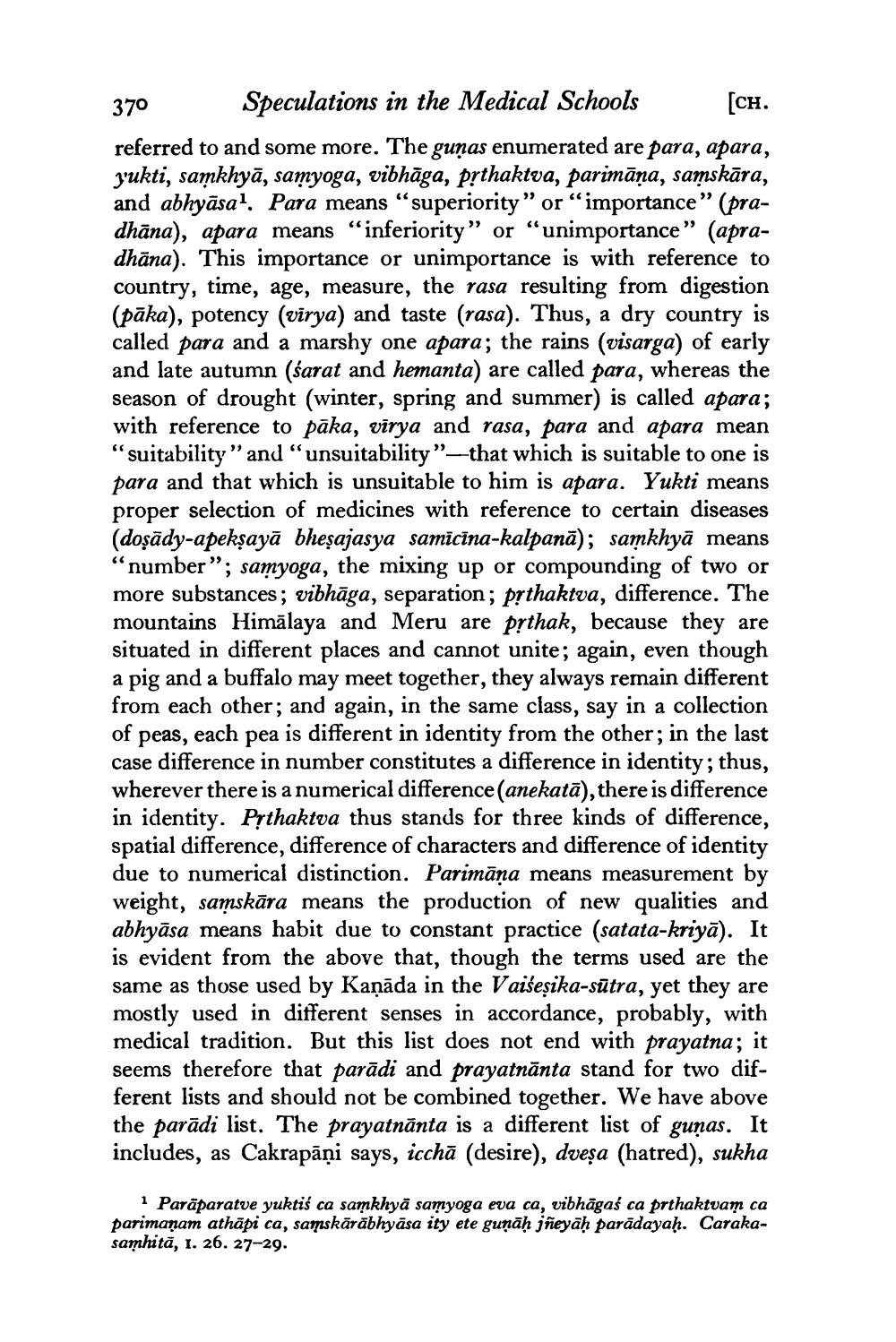________________
370
Speculations in the Medical Schools
[CH.
referred to and some more. The gunas enumerated are para, apara, yukti, samkhyā, samyoga, vibhāga, pṛthaktva, parimāṇa, samskāra, and abhyasa1. Para means "superiority" or "importance" (pradhāna), apara means "inferiority" or "unimportance" (apradhāna). This importance or unimportance is with reference to country, time, age, measure, the rasa resulting from digestion (pāka), potency (virya) and taste (rasa). Thus, a dry country is called para and a marshy one apara; the rains (visarga) of early and late autumn (sarat and hemanta) are called para, whereas the season of drought (winter, spring and summer) is called apara; with reference to pāka, virya and rasa, para and apara mean "suitability" and "unsuitability"-that which is suitable to one is para and that which is unsuitable to him is apara. Yukti means proper selection of medicines with reference to certain diseases (doṣady-apekṣaya bheṣajasya samīcīna-kalpanā); samkhyā means "number"; samyoga, the mixing up or compounding of two or more substances; vibhāga, separation; pṛthaktva, difference. The mountains Himalaya and Meru are pṛthak, because they are situated in different places and cannot unite; again, even though a pig and a buffalo may meet together, they always remain different from each other; and again, in the same class, say in a collection of peas, each pea is different in identity from the other; in the last case difference in number constitutes a difference in identity; thus, wherever there is a numerical difference (anekatā), there is difference in identity. Prthaktva thus stands for three kinds of difference, spatial difference, difference of characters and difference of identity due to numerical distinction. Parimana means measurement by weight, samskāra means the production of new qualities and abhyasa means habit due to constant practice (satata-kriyā). It is evident from the above that, though the terms used are the same as those used by Kaṇāda in the Vaiseṣika-sutra, yet they are mostly used in different senses in accordance, probably, with medical tradition. But this list does not end with prayatna; it seems therefore that parādi and prayatnanta stand for two different lists and should not be combined together. We have above the parādi list. The prayatnanta is a different list of guņas. It includes, as Cakrapāņi says, icchā (desire), dveṣa (hatred), sukha
1 Paraparatve yuktiś ca samkhyā samyoga eva ca, vibhāgaś ca prthaktvam ca parimanam athāpi ca, samskārābhyasa ity ete guṇaḥ jñeyāḥ parādayaḥ. Carakasamhita, 1. 26. 27-29.




